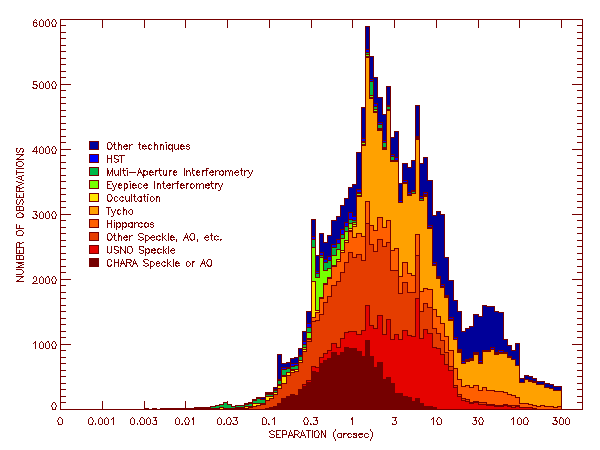Fourth Catalog of Interferometric Measurements of Binary Stars -
Catalog Statistics

Figure 1: Distribution of measures with time. Barely visible are the 1895 observations
of Schwarzschild & Villiger (1896), followed two decades later by the 1919-1921 data obtained
using the famous 20-foot beam interferometer with the Mount Wilson 100-inch Hooker Telescope
by Anderson (1920) and Merrill (1922).

Figure 2: Distribution of measures with separation. The
major item to note here is the contribution made at the smallest separation regime (under
0".1) both by long-baseline interferometers and by occultation techniques. This
figure clearly indicates that occultation timings could play an important role in binary
star astrometry and photometry with greater coordination of observing efforts (to
overcome the limitation of one-dimensional coverage) and through the use of standard
filters. Unfortunately Figure 1 illustrates a steady decline in published occultation
results.

Figure 3: Distribution of interferometric measures with declination. Historically,
interferometric observations have mostly been restricted to equipment in the Northern
Hemisphere, although this disparity has been reduced somewhat by Hipparcos and Tycho, by
the CHARA southern speckle program from 1989-1996, and by the more recent speckle efforts
of Horch et al., Tokovinin, and the USNO speckle group. A large-scale dedicated interferometric
observing program for the Southern Hemisphere is still sorely needed, however. The
substantial spike at declinations of 40-50 degrees results from recent duplicity
surveys of the Kepler Objects of Interest (KOIs).


